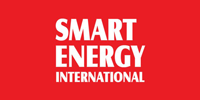
The immediate impacts of the coronavirus pandemic are brutally clear: Exhausted medics, empty supermarket shelves and lines at food banks. It’s also clear that the pandemic will reshape societies and economies in the longer term. What we struggle with, as we do whenever we try to forecast the future, is to know how to use today’s impacts to predict what that reshaping will look like.
A couple of macro points first. We should take a wide-angle view of what’s to come. As the New Yorker noted, previous pandemics have “sparked riots and propelled public-health innovations, prefigured revolutions and redrawn maps.” But that doesn’t necessarily mean imagining wholly different futures. Many analysts are basing forecasts on the idea that the pandemic will exacerbate existing trends rather than create new ones.
So which trends should we pay attention to? I see two that are critical to food. The first is the ongoing backlash against globalization, which has led populist leaders — Trump, Bolsonaro, Putin — to back away from free-trade deals and promote inward-looking policies. The other is an awareness of the need to build more resilient systems, forced upon us in part by the knowledge that climate change will make extreme weather more frequent. Both forces likely will be accentuated by a pandemic that is restricting travel and exposing the brittleness of some supply chains.
I was mulling the impact of these forces when an email arrived from Stephan Dolezalek, an executive director at the Wheatsheaf Group, a $500 million venture fund with close to 30 investments in the food and ag space. Dolezalek has spent a long time looking at trends in his sector and has come to believe that we’re heading for a food system that “emulates the characteristics of a microgrid: Redundant, distributed, resilient, smaller scale and locally powered, yet connected to the larger world in ways that benefit it when safe but can be disconnected when not so.”
His forecast is based in part on his experience as a VC in other industries that have been upended by similar transitions. Computers used to fill rooms. They migrated to our desks, laps and now our pockets, a transition made possible by the creation of the decentralized computing network that brought you this email. Electricity is in the middle of its own transition to a more decentralized network, as smaller local facilities — think microgrids, residential solar, batteries — start taking on some of the load previously shouldered by large power plants.
The same thing is happening in food, Dolezalek argued. When we spoke by phone this week, his Exhibit A was the beer sector, where a multitude of small craft breweries is taking share from the big incumbents. (Beer sales fell 2 percent last year, but craft sales grew 4 percent to reach almost 14 percent of the U.S. market.)
read more








Recent Comments